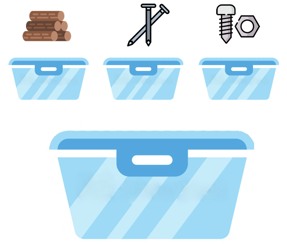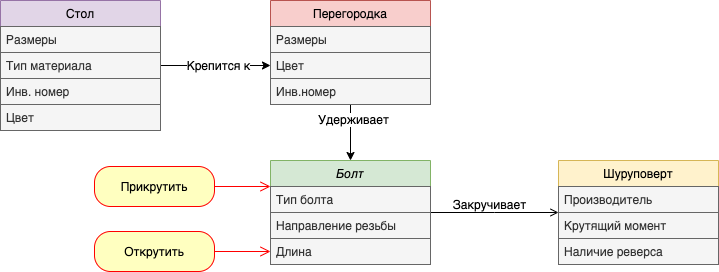As a freelance architect, I often have to deal with people from business who do not understand what IT is, how everything happens there and why all these terrible words.
And when people do not understand what they are talking about, they close and are afraid to make any decision. And since I need to talk about my abilities and how I can be useful, i.e. in fact, to sell my services, I often have to look for common concepts, so to speak, common ground. When people begin to build analogies with what they understand, a more substantive discussion takes place.
Often encountering the same problems, in the end, I decided to share my experience, perhaps it will be useful to someone in its purest form, and someone will understand the principle and come up with better examples and explanations.
In this article I want to talk about the data layers - Physical , Logical , Conceptual .
Physical layer
The physical layer is the database layer. I will not tell the story of the evolution of databases and their types. To begin with, you need basic knowledge, on which you can subsequently superimpose new ones.
So, imagine that you have a storage box and a whole set of different fasteners - bolts, nuts, screws, nails, eccentrics, and more (Fig. 1)

The box is the database, and the fasteners are the data.
Having dumped everything into a box, you have already received a database containing data. Now, every time you need to get something out, you will open the box and get the necessary fastener out of it. In this case, each time you have to dig into the whole box.
This is called an unstructured and unstandardized database. Its advantages are simplicity and low cost.
- . , - , . , , - .
, , , . , .
-.
– .. . , .
. , , .
, . , , .
. — .

, – , .
. , , .
, .
, – , .
- .
.
, . – , .
, , .. . , .
- , – .
, .. .
, , , .
– .
, , . .. , .
, . .
- — .
, , , .
, . , , , .
. , , . , . , , , 30 .
, , . , .
, , , , , .
3 .

- , , .
, – . , , . , , , .
, , .
- , .
, , , , .
, , - , - .
, , . . . ?
- - -.
, , « » . , .
, - (), , (-).
— .
, .
, , , , . .
, , ( , ).
, .
, . , .
. (), .. . , , . , – , , – . (.4)

, .. .
Physical layer - how we organize and store data.
Logical level - we describe and manipulate data.
Conceptual - we talk about data and their relationships.
I hope you found the article useful and entertaining.
PS: this article is not for IT professionals, the article is intended for an average static person, not related to IT, with maximum simplification. And as with any simplification, this article makes deliberate assumptions and omits some details.
For example, I did not explain what keys and hyperlinks are, and an example is needed for this.